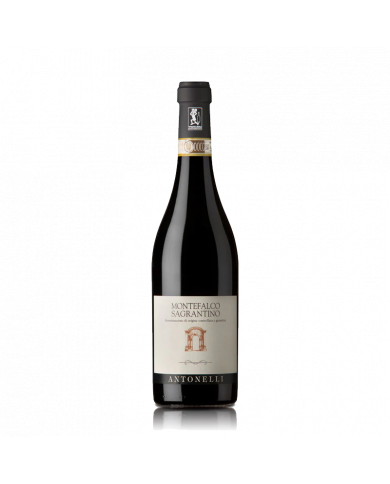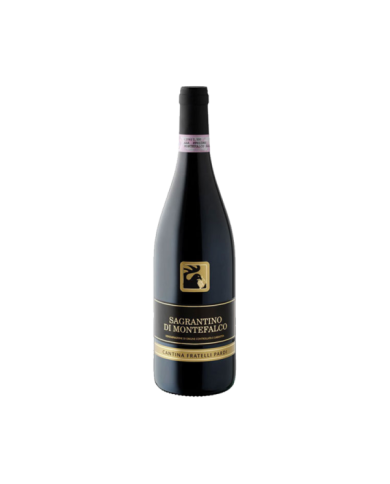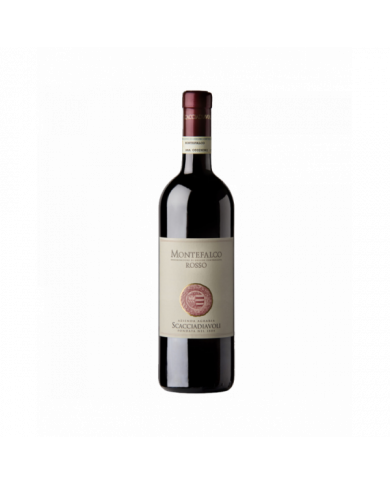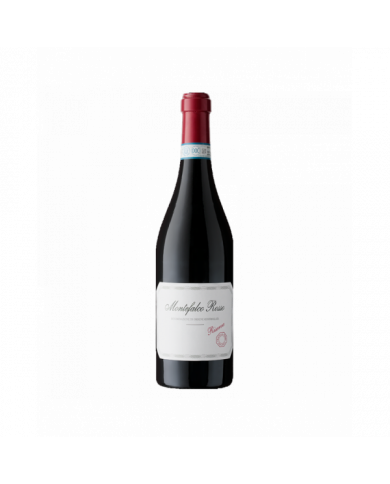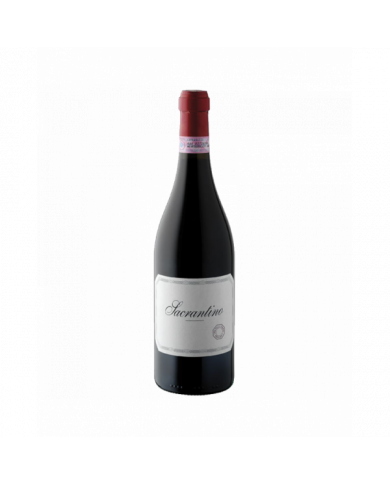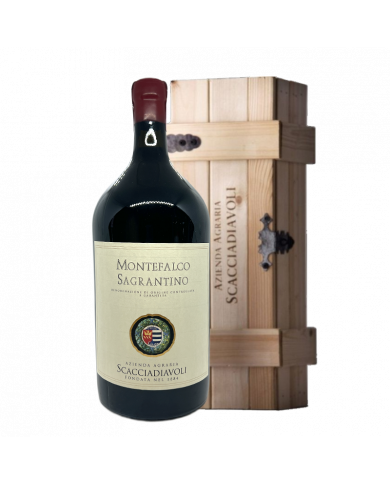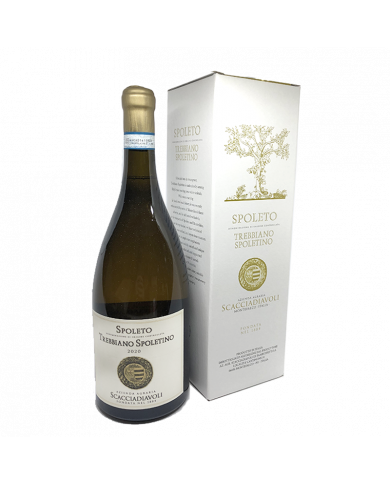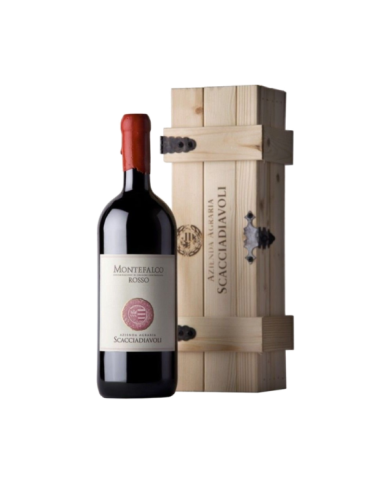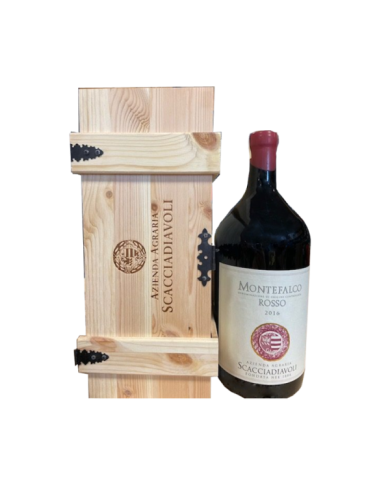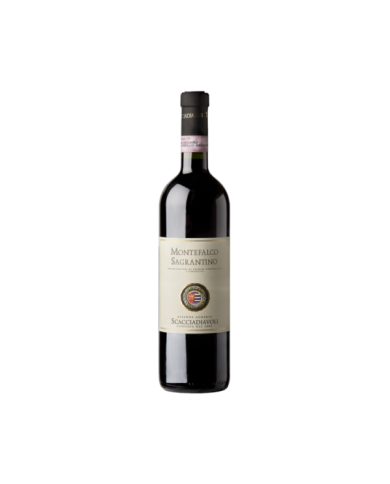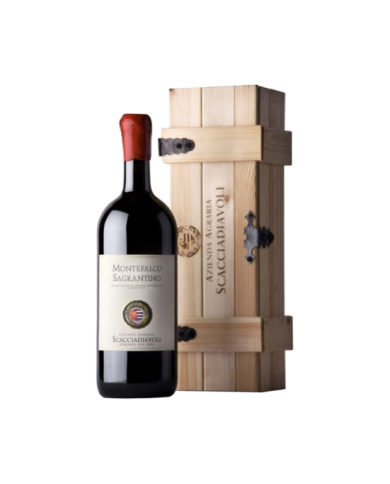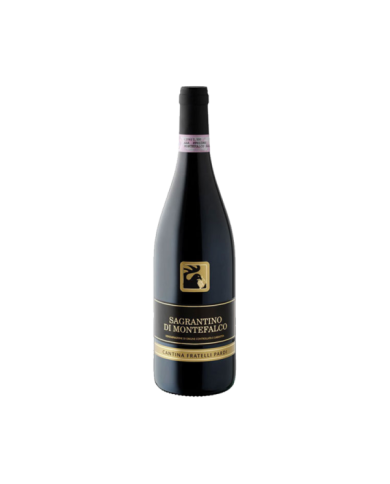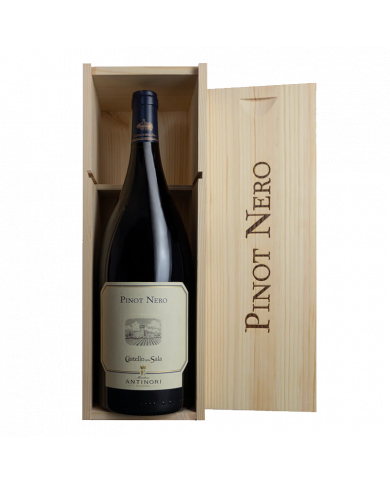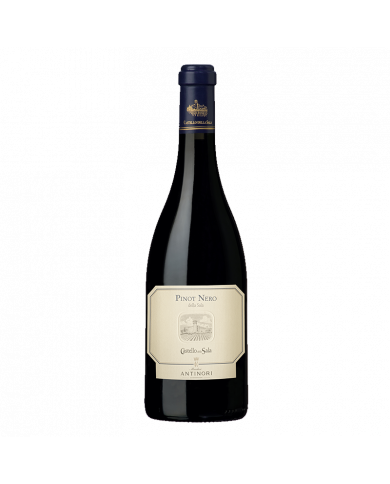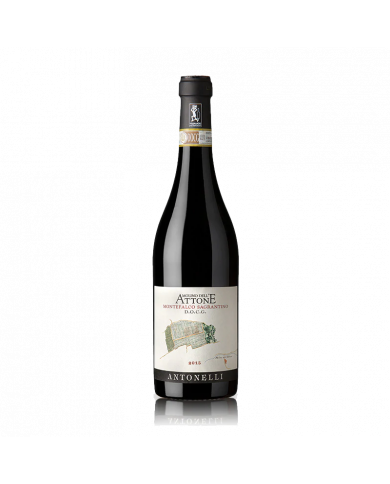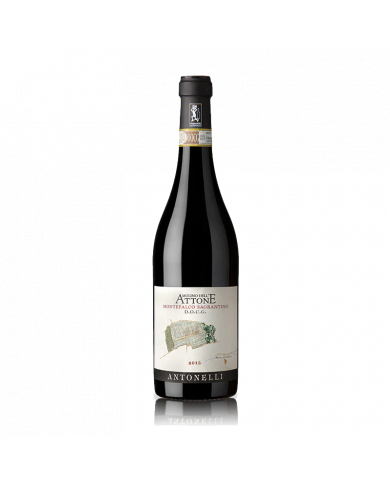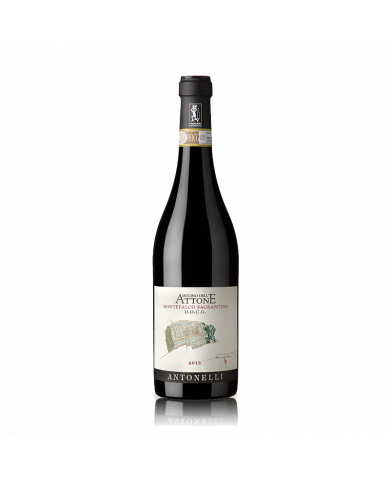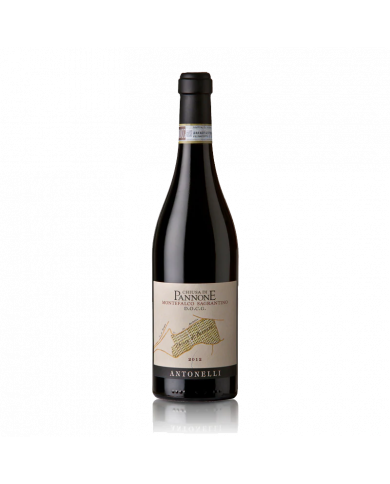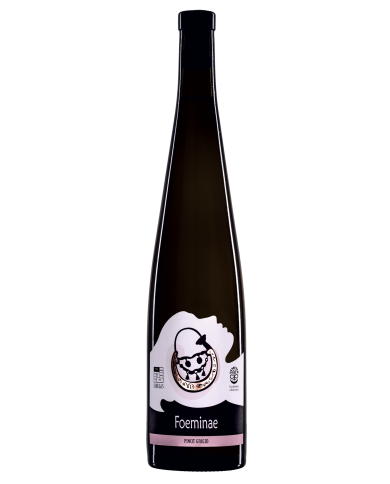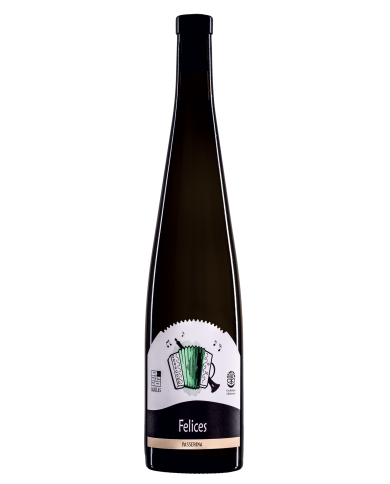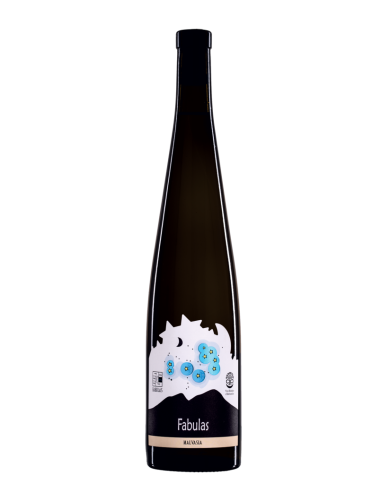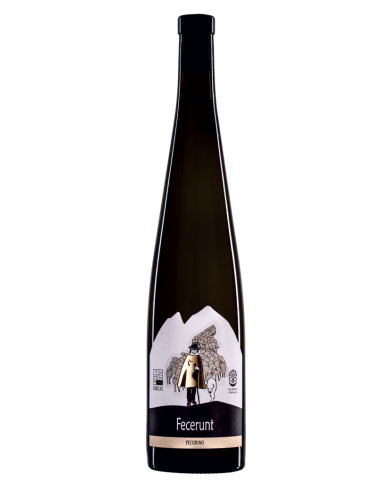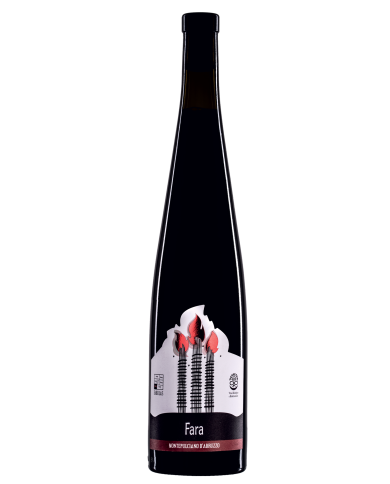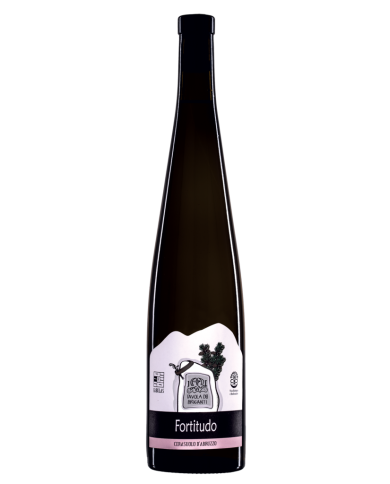The Sagrantino vine, cultivated for centuries exclusively in Montefalco, seems to have been brought there from Asia Minor by the followers of S. Francesco.
Sweet wine obtained by drying grapes on racks. It is the traditional version of Sagrantino. The name derives from the Latin sacer: sacred wine consumed during the feasts of the Christian tradition.
Excellent wine. Intense ruby red color, full, elegant bouquet with hints of cherry, soft and voluminous flavor. In the ancient tradition of the Montefalco area, after having selected the grapes for the production of Montefalco Sagrantino, all the other red varieties were picked for the composition of a fresher and easy-to-match wine. Scacciadiavoli is inspired by this tradition and perfects it by adding that touch that makes this wine even more lovable.
Alcoholic and malolactic fermentation in stainless steel.
Aging in 26 hl French and Slovenian oak barrels for 18 months followed by 9 months in steel.
Ruby red in the glass, with important garnet reflections. The nose, ripe and fruity, recalls sunsweet plums, dark cherries in jam and sour cherries in alcohol, before veering towards notes of camphor, dark chocolate, maple syrup and lavender. Intense in the mouth, characterized by a well-present tannic texture but of excellent quality. Full-bodied, warm and long in persistence. Perfect with venison or venison, it should be tried together with leg of roe deer with aromatic herbs.
From the vineyards of the Lunelli family, between Montefalco and Bevagna, comes Ziggurat, a Montefalco Rosso DOC which is the perfect synthesis of the power of the Sagrantino and Sangiovese grapes, also assisted by a small quantity of Cabernet and Merlot, to smooth out its roughness.
The color is deep, the bouquet is sensual and the body is vigorous. Wine whose refinement is appreciated when young, when fruit and spices blend with the taste of wood, in which Sagrantino has been elevated. But it is after a few years that its success is fully appreciated, when balsamic notes intervene and the tannins soften: thus we discover a wine with a great personality. Montefalco Sagrantino DOCG is suitable for long aging: 20 and more years. Rich in polyphenols which have antioxidant and therefore beneficial properties. The presence of deposits in the bottom of the bottle is natural. Sagrantino Di Montefalco Scacciadiavoli
That the Trebbiano Spoletino grape is of high enological interest is now a certain fact. It is an ancient vine that has only recently been rediscovered. It can be grown in the territory of Spoleto and Montefalco. In our cellar we have aimed to capture the finer and at the same time intriguing soul of this grape. We have given space to its changing and original aromas with a vinification in amphora that respects these characteristics and then we have strengthened its expressive character with an aging in untoasted wood and amphora for at least 9 months. In our opinion the result is that of a great white wine for aging, capable of surprising at every sip for its richness of facets.
Montefalco Grechetto doc is a dry wine that presents a range of lively aromas on the nose as well as in the mouth. Sweet fruit, white and yellow flowers and a good acidic freshness keep it alive and persistent. A native white grape of Umbria, in Scacciadiavoli it is vinified in purity. It accompanies hot summer days served at the right temperature and goes well with first courses or light main courses all year round. Wine to drink young. The presence of deposits in the bottom of the bottle is natural.
Wine of excellent workmanship. Intense ruby red color, ample, elegant perfume with hints of cherry, soft and voluminous flavor. In the ancient tradition of the territory of Montefalco, after selecting the grapes for the production of Montefalco Sagrantino, all the other red varieties were harvested for the composition of a fresher and easy-to-match wine. Scacciadiavoli takes inspiration from this tradition and perfects it by adding that touch that makes this wine even more lovable.
Wine of excellent workmanship. Intense ruby red color, ample, elegant perfume with hints of cherry, soft and voluminous flavor. In the ancient tradition of the territory of Montefalco, after selecting the grapes for the production of Montefalco Sagrantino, all the other red varieties were harvested for the composition of a fresher and easy-to-match wine. Scacciadiavoli takes inspiration from this tradition and perfects it by adding that touch that makes this wine even more lovable.
The color is deep, the bouquet is sensual and the body is vigorous. Wine whose refinement is appreciated when young, when fruit and spices blend with the taste of wood, in which Sagrantino has been elevated. But it is after a few years that its success is fully appreciated, when balsamic notes intervene and the tannins soften: thus we discover a wine with a great personality. Montefalco Sagrantino DOCG is suitable for long aging: 20 and more years. Rich in polyphenols which have antioxidant and therefore beneficial properties. The presence of deposits in the bottom of the bottle is natural.
The color is deep, the bouquet is sensual and the body is vigorous. Wine whose refinement is appreciated when young, when fruit and spices blend with the taste of wood, in which Sagrantino has been elevated. But it is after a few years that its success is fully appreciated, when balsamic notes intervene and the tannins soften: thus we discover a wine with a great personality. Montefalco Sagrantino DOCG is suitable for long aging: 20 and more years. Rich in polyphenols which have antioxidant and therefore beneficial properties. The presence of deposits in the bottom of the bottle is natural. Sagrantino Di Montefalco Scacciadiavoli
Trebbiano base with a straw yellow color. Fine and persistent bubbles. Fresh and dry, elegant nose characterized by notes of ripe fruit. Perfect for an aperitif.
Intense, deep ruby red, at times impenetrable to the eye. It opens to the nose with clear scents of dark, overripe fruit, reminiscent of currants, plum jam and sour cherries in alcohol. Tertiary tones then emerge, leading the memory towards Christmas spices, nutmeg, tobacco, coffee and cocoa. The palate is set on an imposing tannic texture, which is worked to the chisel. Important body, warm mouthfeel and long persistence. Perfect with game, it is excellent with jugged hare.
Produced since 1990 exclusively from Pinot Noir grapes, it is, in a certain sense, the "alter ego" of Cervaro: together they represent the two different expressions of the complex and refined soul of Castello della Sala. The 4 hectares of vineyards from which it is produced are located at over 400 meters above sea level on calcareous soils rich in fossils with sands of sedimentary origin dating back to the Pliocene.
Produced since 1990 exclusively from Pinot Noir grapes, it is, in a certain sense, the "alter ego" of Cervaro: together they represent the two different expressions of the complex and refined soul of Castello della Sala. The 4 hectares of vineyards from which it is produced are located at over 400 meters above sea level on calcareous soils rich in fossils with sands of sedimentary origin dating back to the Pliocene.
A cru that differs from our Chiusa di Pannone for the characteristics of the vineyard, facing east instead of south and with a richer soil in gravel.
A cru that differs from our Chiusa di Pannone for the characteristics of the vineyard, facing east instead of south and with a richer soil in gravel.
Sweet wine obtained by drying grapes on racks. It is the traditional version of Sagrantino. The name derives from the Latin sacer: sacred wine consumed during the feasts of the Christian tradition.
A cru that differs from our Chiusa di Pannone for the characteristics of the vineyard, facing east instead of south and with a richer soil in gravel.
By "closed" was meant a circumscribed olive grove often delimited by stone walls. Chiusa di Pannone was also the same, while today it is the single vineyard used exclusively for the homonymous wine.
Discover the excellent wines of Umbria: taste the authenticity of a territory rich in history!
Umbria is an Italian region with a very ancient history, which extends between Lazio and the Marches, and its rural culture has been deeply marked by agriculture. For centuries, this region has produced wines of excellent quality, and it is still today one of the main centers of Italian wine production.
The excellent wines of Umbria are of great quality and can be tasted throughout the region. The best known varieties are Sagrantino, Grechetto, Canaiolo and Sangiovese, but there are also other local vines such as Montepulciano, Ciliegiolo, Cabernet Sauvignon and Merlot.
The wines produced in Umbria are of great quality, but also of great value: the wine production of the region is in fact recognized worldwide. There are many vines that have been planted in Umbria and which have adapted to the soils and climate of the region, which has made it possible to produce fine wines.
Discover the wine excellences of Umbria: tasting and history
The excellent wines of Umbria are a unique experience to discover. If you are passionate about wine, you cannot miss tasting the wines of the region: the flavours, aromas and sensations that can be savored during a tasting are truly unique, and will allow you to discover the most hidden secrets of Umbrian wine production.
To fully enjoy this area, you don't just have to taste the wines: one way to discover Umbria is also to visit the places where wine is produced. There are numerous Umbrian wineries and wineries that offer guided tours, where you can learn about the history and traditions of this land, discover its beauty and secrets, and taste the wines produced in the region.
The wine excellences of Umbria: the finest vines
Among the most appreciated wines of Umbria are Sagrantino, Grechetto, Canaiolo and Sangiovese. Sagrantino is a red grape variety of great value, which was declared a "superior quality wine" in 1992. It is a well-structured wine, with an intense ruby red color and spicy aromas, with notes of ripe fruit and hints of vanilla.
Grechetto is an aromatic white vine, with a straw yellow colour, intense and complex aromas with notes of exotic fruit, white flowers and peach. It is a medium-bodied wine with a fresh and pleasant flavour.
Canaiolo is a red grape variety that is used to produce various types of wines, from light and fresh to more structured and full-bodied ones. It is a very elegant wine, with an intense ruby red colour, fruity and spicy aromas, with notes of morello cherry and vanilla.
Sangiovese is a red grape variety originally from Tuscany, but which is also grown in Umbria. It is a wine of great structure, with an intense ruby red color and spicy aromas, with notes of ripe fruit and hints of vanilla.
The wine excellences of Umbria: to conclude
The excellent wines of Umbria are truly unique: no other wine in the world is able to express the history and traditions of a territory in such an authentic way. Tasting an Umbrian wine is a unique experience, which will allow you to discover the most hidden secrets of the region's wine production, and to savor the authenticity of a territory rich in history.
Wines of Umbria
Umbria is an Italian region known for its breathtaking landscapes, its art and its food and wine culture. Some of the finest wines of central Italy are produced here, thanks to the geographical position of the region and the particular climatic conditions. In this article, we will explore the wines of Umbria, their characteristics and their curiosities.
Umbria is located in the heart of Italy and borders Tuscany, Lazio and the Marches. The region is characterized by hills, valleys and mountains, which offer a unique environment for the production of high quality wines. The production of wine in Umbria dates back to Etruscan times, when the first vineyards were cultivated in the area.
History of wine production in Umbria
The production of wine in Umbria has a long tradition that dates back to Etruscan times. Over the centuries, winemaking has been influenced by many different cultures, including Roman and medieval. This has resulted in the production of a variety of unique wines, which have gained an international reputation.
Characteristics of Umbrian wines
The wines of Umbria are known for their elegance, their acidity and their balance. The grape varieties grown in the region are mainly red, such as Sagrantino, Sangiovese and Merlot. However, white grapes such as Grechetto, Trebbiano and Chardonnay are also very popular.
The best wines of Umbria
One of the most famous wines of Umbria is Sagrantino di Montefalco, a dry red wine with an intense flavor and a deep ruby colour. Torgiano Rosso Riserva, obtained from the blend of Sangiovese, Canaiolo and Cabernet Sauvignon grapes, is another fine wine of the region. As for white wines, Grechetto di Todi is one of the best, with a fruity flavor and pleasant acidity.
The production of wine in Umbria
The production of wine in Umbria is a very careful and scrupulous process. The region has many wineries, large and small, who work with passion to produce the best wines. Many of these wineries are family-run and use traditional production techniques.
Soils and climatic conditions
The Umbria region is characterized by a Mediterranean climate, with hot summers and mild winters. The soils are mainly clayey and rich in minerals, which favors the production of high quality wines. Furthermore, the altitude of the vineyards and the proximity to the Tiber river create microclimates which influence the ripening of the grapes and the flavor of the wines.
The designations of origin of Umbrian wines
The wines of Umbria are protected by various denominations of origin, including Torgiano DOC, Montefalco DOCG and Colli del Trasimeno DOC. These denominations guarantee the quality and origin of the wines, and represent an important promotional tool for the region.
The food-wine pairing
The wines of Umbria go perfectly with the local cuisine, which is influenced by the traditions of Italy and nearby Tuscany. White wines go well with fish-based dishes, fresh cheeses and vegetable-based first courses. The red wines go well with red meat, wild boar and game dishes.
Curiosities about the wines of Umbria
The wines of Umbria are full of interesting curiosities. For example, Sagrantino di Montefalco has been described by the famous sommelier Luca Gardini as "one of the best red wines in the world". Furthermore, Torgiano Rosso Riserva was the first Italian wine to obtain DOCG recognition.
Map
The wines of Umbria represent a heritage of great value for Italy. The region offers a great variety of fine wines, thanks to its geographical position and particular climatic conditions. The production of wine is a careful and scrupulous process, which involves many family-run wineries. The wines of Umbria go perfectly with the local cuisine and are an excellent choice for those who want to discover the authentic flavors of the region.
FAQs
What are the main grape varieties grown in Umbria?
The main grape varieties grown in Umbria are Sagrantino, Sangiovese, Merlot, Grechetto, Trebbiano and Chardonnay.
What are the best wines of Umbria?
The best wines of Umbria are Sagrantino di Montefalco, Torgiano Rosso Riserva and Grechetto di Todi.
What are the designations of origin of Umbrian wines?
The designations of origin of Umbrian wines are Torgiano DOC, Montefalco DOCG and Colli del Trasimeno DOC.
How do Umbrian wines pair with food?
White wines go well with fish-based dishes, fresh cheeses and vegetable-based first courses, while red wines go well with red meat, wild boar and game dishes.
What are the curiosities about the wines of Umbria?
Among the curiosities about the wines of Umbria, we find that Sagrantino di Montefalco has been described as one of the best red wines in the world by the famous sommelier Luca Gardini and that Torgiano Rosso Riserva was the first Italian wine to obtain DOCG recognition.

